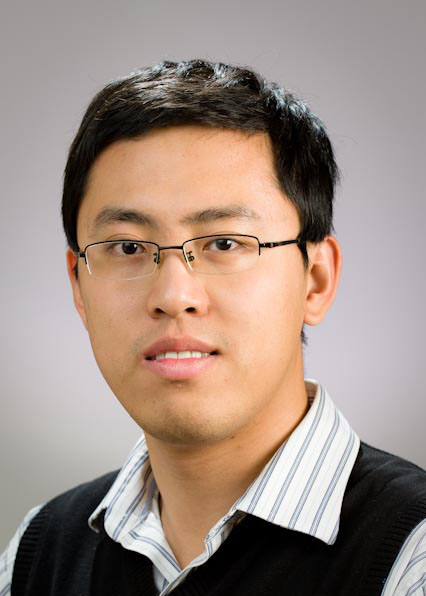Researching Proteostasis, Aging, and Cancer
New GSBMS Faculty Member, Jian Li, Ph.D., Assistant Professor of Cell Biology and Anatomy

In July 2022, the GSBMS welcomed new faculty member, Jian Li, Ph.D., as assistant professor of cell biology and anatomy. “I look forward to working with colleagues at NYMC who share similar research interests in proteostasis, aging and cancer. I am also excited about teaching and mentoring graduate and medical students. I inherited the teaching philosophy from my Ph.D. mentor that ‘If you give a man a fish, you feed him for a day. If you teach a man to fish, you feed him for a lifetime.’ I enjoy the stimulating discussions with students which often trigger new ideas.”
Dr. Li received his bachelor’s degree in biotechnology from Peking University in China. He joined a research lab in his junior year and used microarray analysis to study transcription regulation in nitrogen-fixing bacteria. He became fascinated by gene regulation and genomics. After graduation, he spent one year in the lab of Dr. Tanjun Tong who was a professor and the Director of Aging Research at Peking University Health Science Center, working on a project to understand signaling transduction in cell senescence, a key biological process underlying aging. This post-baccalaureate internship developed his long-standing interests in aging research.
In 2006, Dr. Li moved to the United States to pursue his Ph.D. with Dr. David Gilmour, professor of molecular and cell biology at Penn State University. His thesis work focused on promoter-proximal pausing of RNA polymerase II (Pol II), an important regulatory step of eukaryotic transcription that controls rapid and synchronous gene expression in development and immune response. Combining biochemical and next-generation sequencing approaches, he uncovered two distinct pausing mechanisms either through transcription factor facilitated recruitment of pausing factors or involving the first nucleosome downstream of the transcription start site. His work largely contributed to the kinetic model of promoter-proximal pausing, one of the prevailing models in the field. He also discovered a novel transcription factor Motif1 Binding Protein (M1BP), that sets up paused Pol II at thousands of genes in Drosophila. Following Jian’s work, other researchers have recently found the mammalian orthologue of M1BP that has important roles in regulating autophagy.
In 2012, Jian joined the lab of Dr. Rick Morimoto, Bill and Gayle Cook Professor of Biology and Director of the Daniel F. and Ada L. Rice Institute at Northwestern University, for his postdoctoral training, where he started using the nematode C. elegans as a model. His work uncovered how HSF1, the central regulator of cellular heat shock response (HSR), controls animal development. Interestingly, HSF1 drives a developmental transcriptional program that is distinct from the HSR. HSF1 has broad impacts on animal physiology and its dysregulation underlies many human diseases, including age-dependent neurodegeneration and cancer. For a long time, HSF1’s physiological and pathological roles had been assumed through its regulation of stress response. Jian’s postdoc work indicated an alternative mechanism by which HSF1 partners with other transcription factors including those controlling cell cycle to promote protein synthesis and folding in development.
Jian started his own lab at Oklahoma Medical Research Foundation in 2017. His lab combines the power of genetics in both animal and with cellular models with cellular biological approaches and multi-omics (functional genomics, transcriptomics, proteomics, and metabolomics) to understand protein homeostasis (proteostasis) control in reproduction, aging and cancer.
“HSF1 and other transcription factors (TFs) involved in proteotoxic stress response are double-edged swords,” said Dr. Li. “They do not only cope with environmental stress but also maintain proteostasis in development, reproduction and through animal health span. The decline of their activities underlies imbalanced proteome and compromised cellular functions in aging. On the other hand, aberrant activation of those TFs promotes malignancy. The goal of my lab is to understand how to fine-tune their activities to extend health span and tackle cancer cells that are addictive to those stress-responsive TFs.”
As first or corresponding author, Dr. Li has published at respected peer-reviewed journals, including Molecular Cell, EMBO Journal, Gene & Development and Cell Reports. He has received multiple research awards including Maximizing Investigators’ Research Award (MIRA) from the National Institutes of Health for junior faculty members and postdoctoral awards from National Ataxia Foundation, Chicago Biomedical Consortium and BrightFocus Foundation for Alzheimer’s Disease Research.

